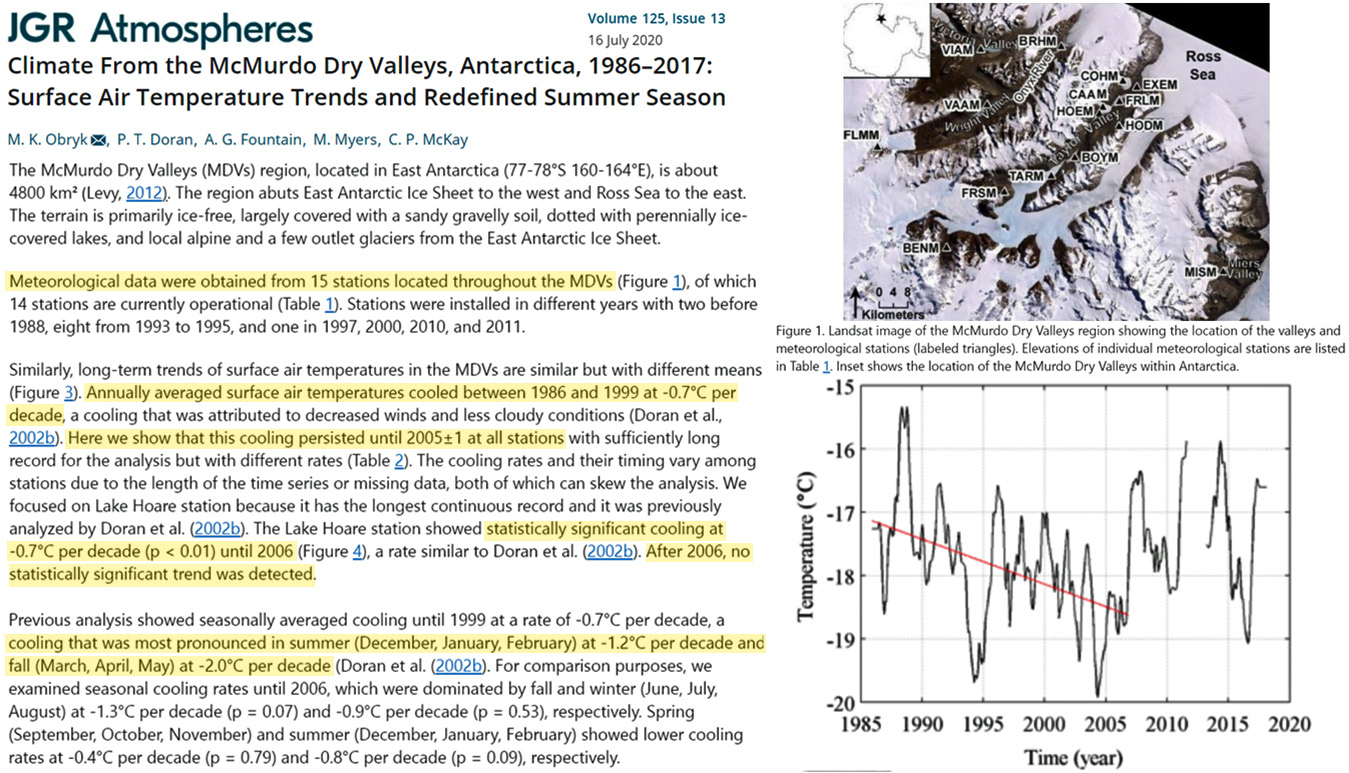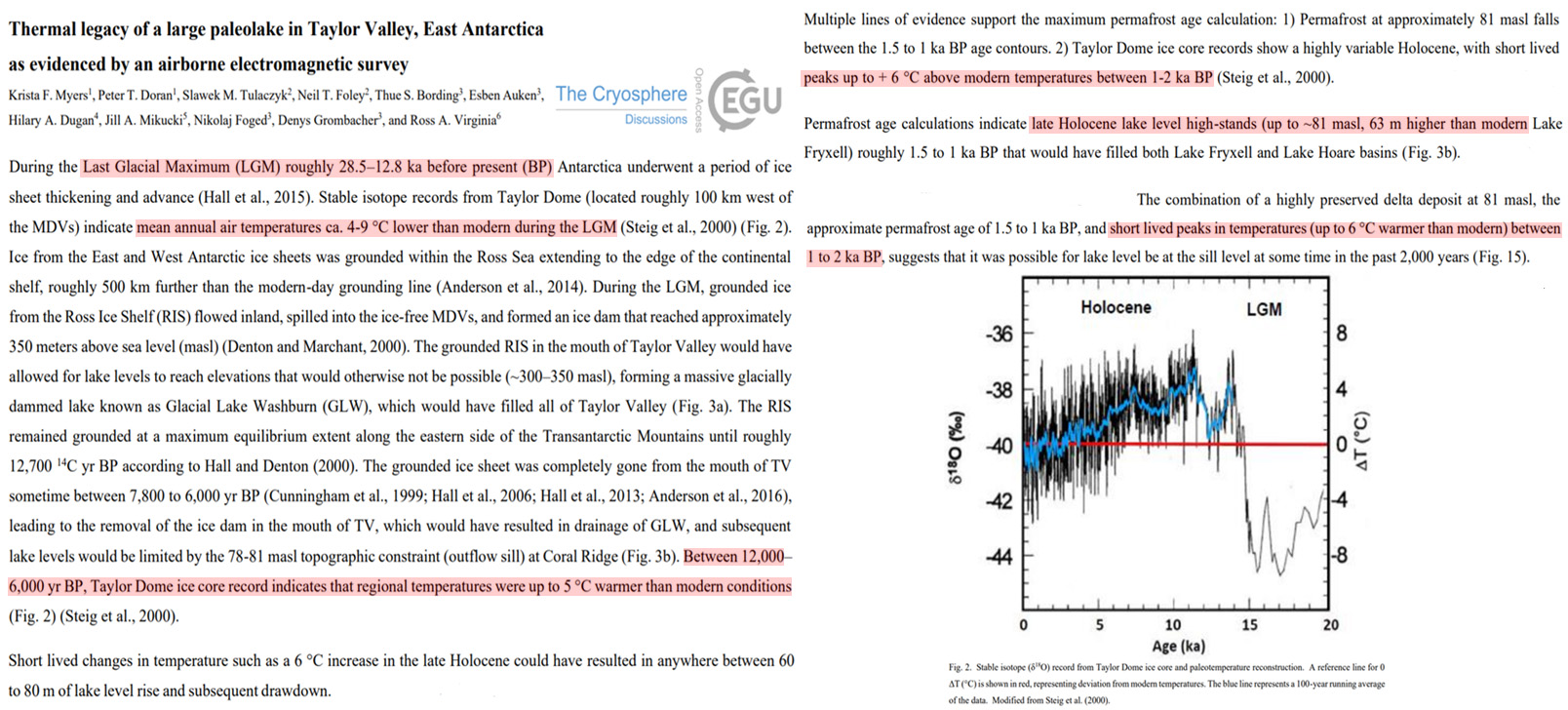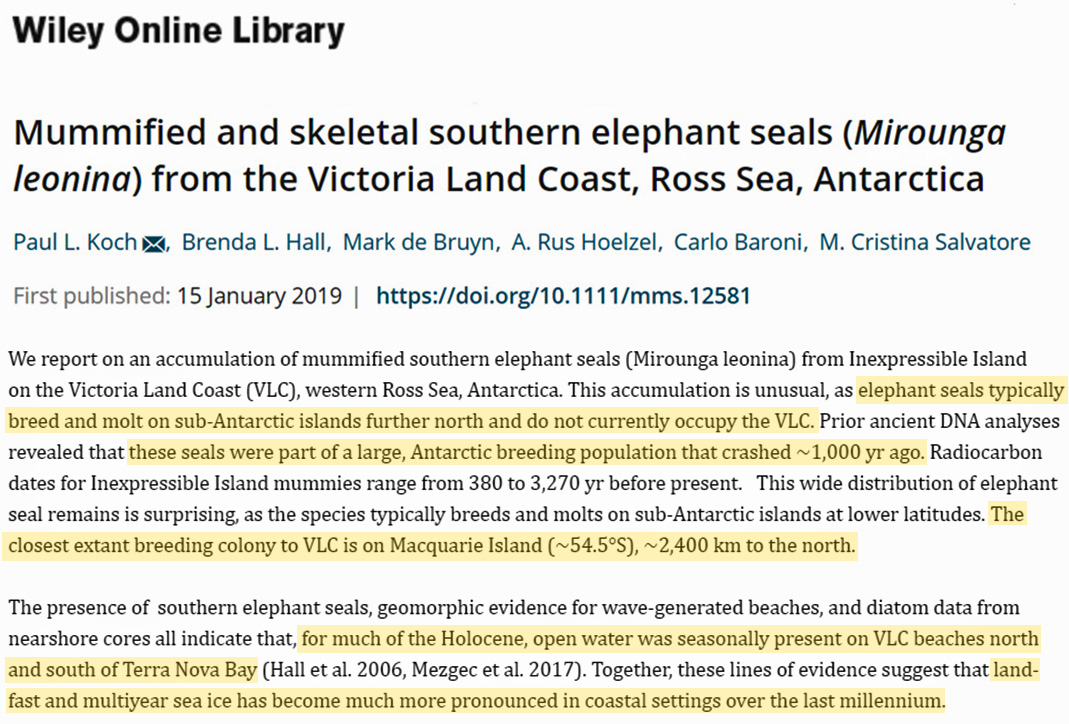By Kenneth Richard on 15. October 2020
As recently as 2000 to 1000 years ago, spanning the Roman to Medieval Warm Periods, East Antarctica was 5-6°C warmer than it is today. The consequent ice melt resulted in >60 meters higher water levels in East Antarctica’s lakes.
East Antarctica has been rapidly cooling in recent decades, with magnitudes reaching -0.7°C to -2.0°C per decade since the mid-1980s (Obryk et al., 2020).

Image Source: Obryk et al., 2020
A new study (Myers et al., 2020) reports that until about 15,000 years ago and throughout the Last Glacial Maximum, East Antarctica was 4-9°C colder than it is today.
Antarctica then abruptly warmed 15°C within centuries. From 12,000 to 6,000 years before present, East Antarctica was about 5°C warmer than it is today.

Image Source: Myers et al., 2020
And then as recently as 2,000 to 1,000 years ago, East Antarctica was so warm (~6°C warmer than present) that its lakes were filled with 60 to 80 meters more meltwater than exists in lake basins today.
“Resistivity data suggests that active permafrost formation has been ongoing since the onset of lake drainage, and that as recently as 1,000 – 1,500 yr BP, lake levels were over 60 m higher than present. This coincides with a warmer than modern paleoclimate throughout the Holocene inferred by the nearby Taylor Dome ice core record. … Stable isotope records from Taylor Dome (located roughly 100 km west of the MDVs) indicate mean annual air temperatures ca. 4-9 °C lower than modern during the LGM (Steig et al., 2000).”
“Between 12,000–6,000 yr BP, Taylor Dome ice core record indicates that regional temperatures were up to 5 °C warmer than modern conditions (Fig. 2) (Steig et al., 2000).”
“Permafrost age calculations indicate late Holocene lake level high-stands (up to ~81 masl, 63 m higher than modern Lake Fryxell) roughly 1.5 to 1 ka BP that would have filled both Lake Fryxell and Lake Hoare basins (Fig. 3b). … Taylor Dome ice core records show a highly variable Holocene, with short lived peaks up to + 6 °C above modern temperatures between 1-2 ka BP (Steig et al., 2000).”
“Lake levels were higher potentially during and after the LGM when an ice dam blocked the mouth of TV, allowing for lake levels to increase by over 280 m compared to modern level. Taylor Dome ice core records indicate an abrupt warming of >15 °C from 15 – 12 ka BP, (Steig et al., 2000), which may have coincided with the maximum lake level of GLW.”
“Short lived changes in temperature such as a 6 °C increase in the late Holocene could have resulted in anywhere between 60 to 80 m of lake level rise and subsequent drawdown.”
This substantial regional warmth can also be verified by the 1,000-year-old elephant seal remains that document a time when Antarctica was sea ice free 2,400 kilometers south of where sea ice free conditions occur today (Koch et al., 2019). Elephant seals require sea ice free conditions to breed, and the same locations where they used to breed during the Medieval Warm Period are today buried in sea ice.



